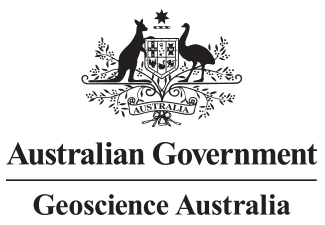Executive Summary
This content is being archived
Please be informed that this content is in the process of being archived. Please see our Legacy Publications page for further information.
The availability of metal, non-metal and mineral raw materials, particularly those that underpin high-technology industries are important for the ongoing development of these industries. Several countries have developed risk lists of metals and minerals that are considered to be critical. The level of criticality of a commodity reflects the combination of risk of supply and the importance of the particular commodity.
Australia is a major exporter of mineral commodities but is a relatively small consumer. Therefore the critical commodities for other countries are not critical at present for Australian industries, with a small number of possible exceptions relating to the agricultural sector (phosphate and potash).
This report examines critical commodities from an Australian perspective and presents comprehensive technical (geological) information on Australia’s resources and resource potential for these critical commodities. The report comprises two parts: Part 1 summarises assessment of critical commodity reports; Part 2 is a technical presentation of geological information on critical commodities. The full report is available at www.ga.gov.au.
Part 1 assesses the EU, Japan, South Korea, UK and US critical commodity reports, and identifies current and potential commodity resources in Australia.
Critical commodities assessed as having category one (high) resource potential in Australia are (in alphabetical order): chromium, cobalt, copper, nickel, platinum-group elements (PGE), rare-earth elements (REE), and zirconium. Of these seven commodities, five are ranked in the group considered as most critical by the EU, Japan, South Korea, UK and US (i.e., excluding copper and zirconium which are of category three and category two criticality, respectively).
Critical commodities assessed as having category two resource potential in Australia are (in alphabetical order): antimony, beryllium, bismuth, graphite, helium, indium, lithium, manganese, molybdenum, niobium, tantalum, thorium, tin, titanium, and tungsten. Of these 15 commodities, eight are considered to be of highest criticality by the EU, Japan, South Korea, UK and US. This assessment of resource potential does not consider non-critical commodities such as base metals, ferrous metals and energy commodities. Australia has category one resource potential in many of these non-critical commodities.
Part 2 presents detailed information on the geological occurrence of critical commodities within a holistic mineral systems framework, and importantly also describes Australia’s mineral deposits that are known to, or may, contain significant quantities of the critical commodities.
Most of the commodities can be grouped into three families of mineral systems.
Mineral system family (1): Mafic-ultramafic-related nickel, platinum-group elements, chromium and cobalt—The occurrence of these commodities is closely related to mafic-ultramafic igneous rocks, particularly for nickel, platinum-group elements and chromium. Based on known resources in Australia, the continent appears to be under-represented in world-class intrusion-hosted nickel, platinum-group elements and chromium deposits. Australia’s geology and in particular the presence of many previously unrecognised large igneous provinces leads us to conclude that Australia is highly prospective for major deposits of nickel, platinum-group elements and chromium.
Mineral system family (2): Felsic igneous-related rare-earth element, tungsten, niobium, tantalum, molybdenum, beryllium, tin and bismuth—All of these metals occur (albeit not exclusively) in association with felsic igneous intrusions, in particular with either highly-fractionated granitic rocks and/or with alkaline igneous rocks. There are regions where deposits of these metals are already known in Australia (brownfields), and in the under-cover extensions of these mineral provinces (brownfields to greenfields).
Mineral system family (3): Heavy mineral sand-hosted zirconium, titanium, rare-earth element and thorium—New discoveries of heavy mineral sand provinces recently in Australia attest to the resource potential of the continent for further delineation of major resources of heavy mineral sands.
In addition to these mineral system families, a group of metals and semi-metals including antimony, indium, gallium, germanium, cadmium, tellurium and selenium are primarily the by-products of the refining of the major commodities zinc, copper, lead, gold, aluminium and nickel. Australia’s high global ranking in resources of all of these major commodities implies that there is significant resource potential for new or increased production of the minor-element by-products listed above.
Australia has category one resource potential for a range of commodities, however countries consider many of these to have category three criticality. For example, copper is rated as category one resource potential, despite its category three criticality, due to its economic importance, predicted growth in demand from industrialised and developing economies, and the resource potential of Australia for new discoveries of copper. Other non-critical commodities for which Australia has category one or category two resource potential include zinc, lead, silver, gold, iron ore, bauxite, uranium, diamonds, phosphate, potash, coal, petroleum and natural gas.




